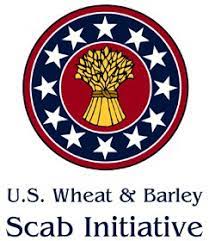The U.S. Wheat and Barley Scab Initiative (USWBSI) is pleased to announce the publishing of its 2022 Fusarium Head Blight Disease Impact Update. This year commentary from experts in 31 states indicated most regions experienced hot and dry conditions which were unfavorable for the development of Fusarium Head Blight (FHB, also known as scab). Thus, FHB did not impact grain yield and quality for most growers. A few isolated problems arose with FHB in areas where rainfall and high humidity levels coincided with heading and flowering. But in most cases, growers that were proactive with fungicide applications were able to mitigate their risk.
“The USWBSI Fusarium Head Blight Disease Impact Update is a valuable annual overview of the impact of FHB on small grains crops and also serves to monitor the production conditions that U.S. wheat and barley growers experienced throughout the year” noted Ruth Dill-Macky, USWBSI Research Co-Chair. “Growers and researchers alike rely on this information to plan research in the years to come, identify production issues that might need attention, and to help validate tools used to mitigate FHB including the Fusarium Risk Tool, fungicides, and crop varieties with improved levels of resistance.”
The Fusarium Head Blight Disease Impact Update provides an annual report of the crop growing conditions as well as the impact of FHB on wheat and barley in different regions of the United States. Additionally, photos from the different growing regions have been included to highlight specific crop conditions. The USWBSI has been releasing this update article annually since 2010 to provide insight into the experiences that small grains growers had with FHB during the most recent growing season.
For readers interested in learning more about Fusarium Head Blight of wheat and barley visit ScabUSA to find publications and resources by USWBSI funded researchers. Producers can also view the USWBSI FHB Risk Tool developed by researchers in the USWBSI, to monitor FHB risk during the growing season as well as review prior year data for planning. Real-time FHB Alerts sent out during the growing season are also provided by the USWBSI, learn more and subscribe on the website.
The USWBSI is a national multi-disciplinary and multi-institutional research consortium whose goal is to develop effective control measures that minimize the threat of Fusarium Head Blight (scab), including the production of mycotoxins, for producers, processors and consumers of wheat and barley. The USWBSI’s more than $8.5 million annual budget comes from Federal funds appropriated through the USDA-ARS and is distributed to research projects in more than 30 states.




